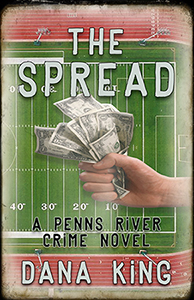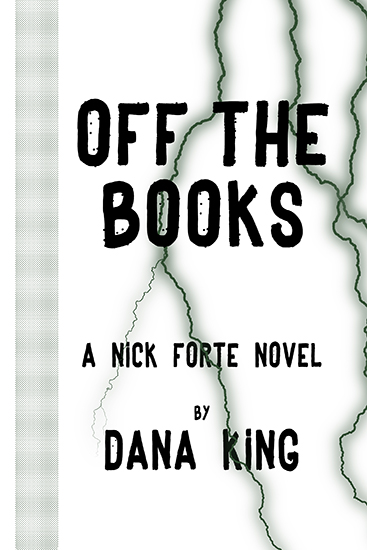It’s safe to assume
most, if not all, of this blog’s readers have an interest in crime fiction.
(Since I don’t really talk about anything else, one-trick pony that I am. At
least I’m not a Tijuana one-trick pony.) That said, let’s hope none of you have
any delusions that weapons—notably guns and knives—work at all the way they do
on television or in the movies. For readers, such blissful ignorance may allow
them to suspend disbelief enough to keep the firearms errors from ruining the
story. Writers don’t have that escape hatch: we’re supposed to do it right. (At
least we say we are. How many writers do you know openly admit they don’t care
how their weapons work, or the violence they describe? All claim to take pains
to “get it right.”) Now there’s no excuse. Ben Sobieck’s The Writer’s Guide to Weapons is finally available, and it was
worth waiting for. (And, boy howdy did we have to wait for it. Writer’s Digest
delayed publication so long I worried they’d have to add a chapter on ray guns
and antimatter bullets to keep things current.)
This is a true
guide: more than a primer, not a textbook. Sobieck breaks things into useful
sections, including the Ten Golden Tips For Writing About Weapons. (Number 3:
YouTube is your friend.) Even more fun are the 25 Top Weapons Myths (Number 22:
“Being shot with a gun is like getting hit by a train loaded with concrete and
circus animals;” Number 24: “Handguns go click-click-click
when they’re empty.”) There’s also a brief section on half-myths, and a
run-down of which weapons may be mots practical for a specific character,
taking into consideration, gender, size, age, physical condition, and
bad-assedness.
Those are great for
learning what not to do, and how to handle certain thigs, but the meat of this
book lies in the two core sections. Part One (Firearms) has sections titled,
Firearm Safety; entry-level courses on shotguns, handguns, and rifles
(including advantages and disadvantages of each); ammunition; suppressors and
silencers; ballistics; and how to kill a character with a firearm, among
others. The Knives section covers all the similar, applicable general topics, as
well as worthwhile information on sharpening and sheaths. (I had no idea why
knives are stropped to keen the edge, and I’m not going to tell you here. Buy
the book, cheapskate.) There is also contans an excellent list of references
and external resources, as well as a comprehensive glossary.
This material could
be dry as a desert road in a sand storm in less skilled—and compassionate—hands,
but Sobieck keeps things moving, with some help from his ongoing series
character, “gal-damned” detective Maynard Soloman. Maynard and a couple of assistants provide
examples of what not to do, then show how to do it better; Sobieck describes
what was wrong. His tongue remains firmly in cheek during these anecdotes, but
the points are valid, and well made. (Maynard does take a beating, though. So
it goes. Spoiler alert: he lives.)
 It’s not like Sobieck has to depend too much on Maynard to keep things
moving. His writing style naturally lends itself to page turning. (He’s a
fiction author, as well. His first book, Cleansing
Eden, might be my favorite
take on serial killers; his newest is Glass
Eye, which currently
holds a high position on my To-Be Read List.) His descriptions and warnings are
entertaining without losing all gravitas. (These are items of death we’re talking about here.) It’s fun to read, not
at all like a chore. I found myself pausing often to read aloud a passage to
The Beloved Spouse, who carse not nearly as much about accurate firearm
descriptions as I do, but does love her some good writing.
It’s not like Sobieck has to depend too much on Maynard to keep things
moving. His writing style naturally lends itself to page turning. (He’s a
fiction author, as well. His first book, Cleansing
Eden, might be my favorite
take on serial killers; his newest is Glass
Eye, which currently
holds a high position on my To-Be Read List.) His descriptions and warnings are
entertaining without losing all gravitas. (These are items of death we’re talking about here.) It’s fun to read, not
at all like a chore. I found myself pausing often to read aloud a passage to
The Beloved Spouse, who carse not nearly as much about accurate firearm
descriptions as I do, but does love her some good writing.
No writer without a solid weapons background should write weapons
without having this book handy. I have a decent layman’s knowledge, and have an
honest-to-God firearms expert on call for any questions, and I ate this book
up, learning things I would never have thought to ask. (It also saved me from
an embarrassing oversight in the work-in-progress.) Studiously researched,
engagingly delivered, The Writer’s Guide
to Weapons should be on the short list of most valuable writer’s aids for
the crime fiction community.



1 comment:
There are reviews, and then there are *reviews*. I give this one an A+, but not only because you enjoyed the book. Shiste, I should put this on the fridge or my resume. Thank you.
Post a Comment